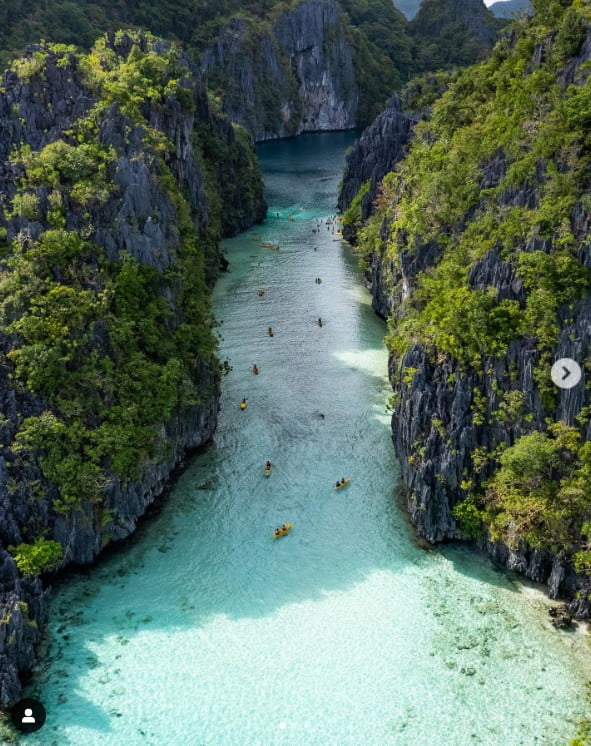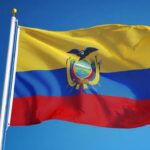The Philippines is a land with many unexpected things. From its vibrant culture to its stunning natural beauty, there’s always something new in this island paradise. With over 7,000 islands, the Philippines is home to a diverse array of flora and fauna and a rich cultural heritage spanning centuries. From the bustling city streets of Manila to the tranquil beaches of Palawan, the Philippines is a country that has something for everyone. Let’s explore some fun facts about the Philippines that make it a unique and unforgettable destination.
Fun Facts About The Philippines: 7,000+ Islands
- The Philippines has over 7,000 islands, making it one of the largest archipelagos in the world.
- However, the islands are spread over 300,000 square kilometers of ocean in the western Pacific Ocean.
- The largest islands are Luzon, Mindanao, and Samar, home to most of the country’s population.
- Due to its many islands, the Philippines is known for its diverse flora and fauna, with many species found nowhere else.
- So, the islands also offer various visitor activities, including world-class beaches, diving spots, and cultural landmarks, making it a popular tourist destination.

Image source: Instagram @travelatoria_com
World’s Smallest Primates: Tarsiers
The Philippines is home to the world’s smallest primates, known as tarsiers. These tiny creatures can find in the forests of Bohol and regard for their huge eyes and long fingers. Despite their small size, tarsiers can leap up to 16 feet in a single bound.
Fun Facts About The Philippines: Jeepneys
Jeepneys are a unique sight to see when it comes to transport in the Philippines. These colorful, open-air buses are a popular mode of transportation in the Philippines and can see nationwide. Originally, jeepneys were made from leftover US military jeeps after World War II and have since become a symbol of Filipino culture.
Top Coconut Producer In The World
- The Philippines produces the most coconuts globally, with over 15 million tons annually.
- Coconut trees are abundant in the Philippines, with over 3 million hectares of land dedicated to coconut cultivation.
- The coconut industry is an essential source of livelihood for many Filipinos, providing employment opportunities for over 3 million people.
- Coconut products, such as coconut oil and desiccated coconut, are among the top exports of the Philippines, contributing to the country’s economy.
- The versatile coconut uses in many products, including food, cosmetics, and biofuel, making it an essential natural resource for the Philippines and the world.
Chocolate Hills: Geological Wonder
The chocolate hills are a geological wonder found on the island of Bohol. These unusual hills are made of limestone and turn brown during the dry season, resembling giant chocolate drops. The hills believe to have formed millions of years ago through coral reef uplift.
Rare Philippine Eagle
The Philippine Eagle is one of the world’s rarest and most endangered birds. This majestic bird can only find in the Philippines and its distinctive crest and sharp talons. Conservation efforts are currently underway to protect the Philippine Eagle and its habitat.
Unique Flag Flown Upside Down In War
- The Philippines produces the most coconuts globally, with over 15 million tons annually.
- During times of peace, the flag flow with the blue stripe on top and the red stripe on the bottom.
- However, during times of war, the flag flow upside down, with the red stripe on top and the blue line on the bottom, to signify a state of emergency.
- Therefore, this tradition dates back to the Philippine Revolution in the late 1800s and observe in various conflicts throughout history.
Ancient Banaue Rice Terraces
The Banaue Rice Terraces are an ancient engineering marvel found in the Cordillera region of the Philippines. These terraces build over 2,000 years ago by the Ifugao people and are still in use today. The decks are often called the “Eighth Wonder of the World” and have been declared a UNESCO World Heritage Site.
Oldest Stone Church: San Agustin Church
The San Agustin Church in Manila is the Philippine’s oldest stone church. It builds in the 16th century and has survived numerous earthquakes and wars. However, the church regards for its beautiful baroque architecture and intricate designs.
Fun Facts About The Philippines: National Animal
- The carabao, also known as the water buffalo, is the national animal of the Philippines.
- It is an essential part of Philippine culture and history, as it use as a work animal for centuries.
- However, carabaos are for their strength and use for plowing fields, transporting goods, and even as a source of milk and meat.
- They use in cultural festivals, such as the Carabao Festival, in honor of San Isidro Labrador, the patron saint of farmers.
- So, the carabao considers an endangered species despite being a domesticated animal due to habitat loss and overhunting.
Read More: Fun Facts About Venezuela: A Land Of Beauty And Contrasts
Fun Facts About The Philippines: National Dress
The Philippine national clothing is the Barong Tagalog. It is a lightweight, embroidered shirt worn by men on formal occasions. Various materials including pineapple fibers, silk, and cotton make up the dress. The intricate designs and embroidery on the Barong Tagalog are a testament to the country’s rich cultural heritage.
Hinulugang Taktak Waterfalls
In the province of Rizal, there is a waterfall called Hinulugang Taktak. It is a popular destination for locals and tourists, known for its clear waters and picturesque surroundings. So, the waterfall was also once a popular swimming spot for Filipino presidents, including Manuel Quezon and Ramon Magsaysay.

Image source: Instagram @color_it_alex
Fun Facts About The Philippines: Ecological Palawan
The Philippines is the last ecological frontier and refer to as Palawan. It is home to diverse flora and fauna, including the Palawan bearcat, the Palawan peacock-pheasant, and the Philippine cockatoo. Moreover, Palawan is also home to one of the longest underground rivers in the world, the Puerto Princesa Subterranean River.
Tarsiers Inspires Yoda’s Design
- The tarsier, a small primate native to the Philippines, regards for its unique appearance and behavior.
- Its large eyes and long fingers say to resemble the fictional character Yoda from the Star Wars franchise.
- The creator of Yoda, George Lucas, has confirmed that the tarsier inspired the character’s design.
- The tarsier’s popularity has also led to its depiction in various forms of media, including movies, television shows, and video games.










